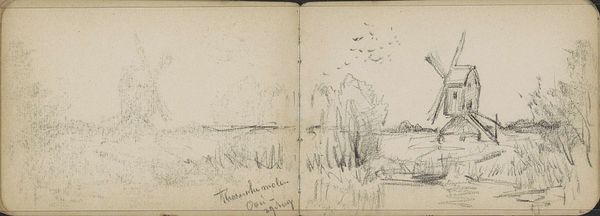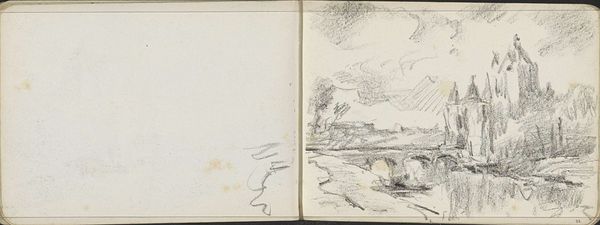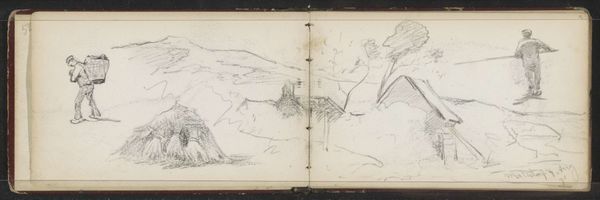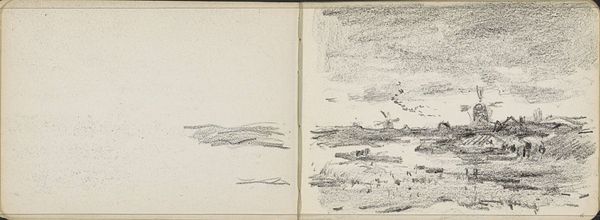
Eenden, een hond in het gras en de Lange Kade aan de Kralingse Plas 1864 - 1867
0:00
0:00
drawing, plein-air, paper, watercolor, ink
#
drawing
#
toned paper
#
animal
#
impressionism
#
plein-air
#
dog
#
incomplete sketchy
#
landscape
#
figuration
#
paper
#
personal sketchbook
#
watercolor
#
ink
#
ink drawing experimentation
#
pen-ink sketch
#
sketchbook drawing
#
watercolour bleed
#
watercolour illustration
#
sketchbook art
#
watercolor
Copyright: Rijks Museum: Open Domain
Curator: Here we have a drawing from Johannes Tavenraat, titled "Ducks, a Dog in the Grass and the Lange Kade on the Kralingse Plas", dating from between 1864 and 1867. It’s rendered in ink and watercolor on paper, and held here at the Rijksmuseum. What are your first impressions? Editor: It feels so light and airy. There's a wonderful sense of movement in the grass and water, even with the limited palette. I notice how Tavenraat divides the composition between distinct activities in an interesting fragmented scene. Curator: It’s part of a larger visual history where nature served as a retreat from rapid industrial growth. Watercolours like these show resistance to the mechanized worldview of the nineteenth century. I can explore how that tension affects the way people navigated their world. Editor: That makes sense; this evokes an idealized, perhaps even sentimental vision of nature. What about the dog and the ducks - any insight there? Dogs, across many eras, often appear as symbols of loyalty or vigilance, connecting them deeply with themes of social order, in my estimation. What kind of meanings and symbols may arise from the animal in this image, here? Curator: Absolutely. I also look at the political contexts; the 19th century in the Netherlands saw growing tensions between rural and urban lifestyles. Rural environments and those that identify as part of them are often disregarded by the state apparatus. This quiet pastoral sketch stands as a visual assertion of that identity in Dutch culture. The drawing provides a crucial historical lens on these lived experiences of landscape and identity in Dutch art. Editor: And this reminds me how water often represents the unconscious in art, right? Then these ducks floating could indicate our deeper instincts, the inner-self and also the subconscious or the intangible feelings connected to our cultural memory, and our psychological experience and history. The image captures a unique snapshot of rural existence, a tranquil Dutch polder scene of human, animal, and their symbiotic interaction. Curator: Agreed! Ultimately, thinking about that interplay between history and nature through such beautiful details offers us insights into the lived experiences of those in the period. Editor: I concur, by carefully examining visual motifs we gain a valuable peek at historical context. And this little sketch seems to offer the viewer, then and now, that peaceful vision and cultural tie back to our history, psychology, and cultural traditions.
Comments
No comments
Be the first to comment and join the conversation on the ultimate creative platform.













